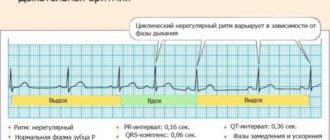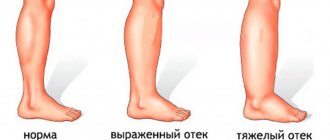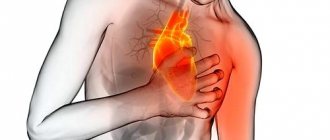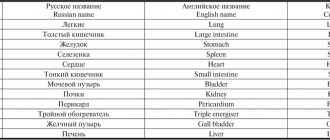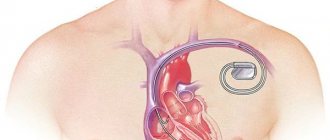Often, bearing a child is accompanied by various pathological conditions; one of the common problems is gestosis (or preeclampsia). It can occur both during pregnancy and directly during or immediately after childbirth. This pathology is accompanied by disruption of the functioning of vital organs. A woman often experiences vascular spasm (generalized) in all tissues, affecting the nervous system, heart, kidneys, and liver. This condition also has a negative impact on the fetus.
Appointment with an obstetrician-gynecologist, MD. 2,600 rub.
Appointment with an obstetrician-gynecologist of higher education. cat. from 2,500 rub.
Admission of Doctor of Medical Sciences hemostasiologist RUB 2,600.
All prices Make an appointment
According to statistics, gestosis occurs in almost 15% of cases. Without treatment, the pathology leads to irreversible changes in the body, and in severe cases can cause the death of a woman and child. But fortunately, thanks to modern diagnostic methods, such a condition can be predicted and eliminated in the early stages. Let's figure out how treatment occurs and what symptoms should alert a pregnant woman.
Causes of the disease
The etiology of the disease continues to remain unclear to this day.
The constant search for the causes of gestosis is dictated by the sad statistics of maternal mortality: gestosis is one of the top three leading causes of death for women performing reproductive functions.
The most severe form of gestosis - eclampsia - was described back in the 4th century BC. Hippocrates, as a convulsive syndrome similar to epilepsy. Until the beginning of the 18th century, eclampsia was considered a special form of epilepsy. In 1843, the English physician Lever showed that eclampsia is preceded by edema, proteinuria and headache.
The existing understanding of the etiology of the development of gestosis includes more than 20 theories: infectious, intoxication, renal, hemodynamic, endothelial damage, endocrinological (impaired hormone production), placental (morphological changes in the placenta).
According to modern concepts, gestosis is considered as a genetically determined insufficiency of the processes of adaptation of the mother's body to new conditions of existence that arise with the development of pregnancy.
In the second half of pregnancy, a number of physiological changes occur in the body of pregnant women, predisposing to the development of gestosis. After 20 weeks of pregnancy, there is a significant increase in circulating blood volume (up to 150% of the initial level), a moderate increase in peripheral resistance, the formation of uteroplacental blood flow, and an increase in pulmonary blood flow with a tendency to hypertension.
The placenta is a key character in pregnancy
So, we have come to the most important point in the physiology of pregnancy. From the mother's blood, everything necessary, and first of all water, is obtained by another main character of pregnancy, which is not well known - the child's temporary organ called the placenta.
The placenta begins to form like this. Approximately on the 7th day after conception, after traveling a long way through the fallopian tube, the embryo ends up in the uterus. An embryo is an unborn child in a vesicle, the shell of which is covered with villi. When the vesicle is near the wall of the uterus, it first attaches to it with its villi, and then gets to work: with the villi it rebuilds the vessels of the uterus so that they become dilated, full of blood, and around the villi itself they form a mini-pool of mother’s blood, which is constantly and quickly renewed . In this case, the baby’s blood in the villus and the mother’s blood in the pool do not mix. Much like a germinating seed, its roots absorb water and everything it needs from the soil, but not sand, clay and other large objects. “You provide us with building materials, but we know what and how to build,” both the embryo-child and the seed of the plant seem to be saying.
The seed takes roots from the soil only what it offers it. It cannot cause rain, or turn an underground source towards itself. Not so with the placenta: it is not a simple pump that pumps out what is given. No, she, in the apt expression of Michel Auden, is a “baby’s lawyer,” who, among other things, knows how to intervene in the physiology of the mother’s body and “squeeze” out of it what the baby needs. And if the blood pressure (and it is provided by water) in the placenta and the baby begins to fall, she will do everything to get the necessary fluid.
The placenta grows and develops; its construction also requires nutrients from the mother’s blood, and by 18 weeks its formation is generally completed. That is, by the time the child’s rapid growth begins, there should already be a powerful, functional placenta.
So, let's remember two facts well. First: the amount of water in the mother’s blood determines the amount of water in the child, as well as how well building substances will flow to him. Second: the placenta, as an active organ-advocate of the child, in case of shortage, will manipulate the mother’s body so as to receive enough nutrition and water. Up to conflicts.
Classification of the disease
Preeclampsia has four clinical forms, which is reflected in the classification of this disease according to clinical signs.
Preeclampsia is divided into: dropsy, nephropathy of pregnancy (mild, moderate, severe), preeclampsia and eclampsia. Various forms of gestosis are considered as stages of a single pathological process, however, each of them requires certain diagnostic and therapeutic measures.
In modern conditions, “erased” and monosymptomatic forms of gestosis are distinguished.
Dropsy of pregnancy
characterized by one symptom - the appearance of edema.
Nephropathy
characterized by a triad of symptoms: edema, proteinuria and hypertension. The clinical picture of gestosis and its diagnosis are based on identifying any of the symptoms.
Normally, average blood pressure should be no more than 100 mm Hg. Art., an increase of 15 mm Hg. indicates the onset of the disease.
In order to diagnose gestosis, pregnant women should be weighed (physiological weight gain of 300-350 g per week), blood pressure measured in both arms, urine tests (determining proteinuria) weekly in the third trimester of pregnancy, a thorough obstetric examination be carried out, and if necessary, involve other specialists ( ophthalmologist, therapist, neurologist, etc.).
The traditional meaning is to assess the “ring” symptom and measure water balance. The diagnosis of renal dysfunction deserves special attention. For this purpose, the level of proteinuria and cylindruria in single and daily urine samples, the relative density of urine and daily diuresis in a urine sample according to Zimnitsky are determined (isosthenuria and nocturia are characteristic of gestosis). Indicators of biochemical blood tests are also of diagnostic importance: hypoproteinemia, a decrease in the albumin-globulin ratio below one, an increase in urea and creatinine levels, etc. An important role is played by the study of the blood coagulation system, in which thrombocytopenia (a decrease in the number of platelets to 150 thousand and below) and an increase in fibrin degradation products are possible. Ophthalmoscopy is an informative method for assessing the condition of the fundus vessels, which reveals angiopathy, hemorrhages, edema and retinal detachment.
It is known that gestosis is a prognostically unfavorable complication of pregnancy not only for the mother, but also for the fetus: against the background of gestosis, placental insufficiency develops, leading to fetal malnutrition, and sometimes to its antenatal or intrapartum death. Thus, in order to assess the condition of the fetus during pregnancy, a dynamic ultrasound study with Doppler measurements of the vessels of the utero-fetoplacental system and cardiac monitoring of the fetus are performed.
Dropsy and nephropathy are differentiated from kidney diseases (glomerulo- and pyelonephritis), hypertension.
The next stage of development of gestosis is preeclampsia
. In addition to the signs characteristic of nephropathy, symptoms of cerebrovascular accident, increased intracranial pressure and cerebral edema appear: headache, blurred vision, pain in the epigastric region, nausea, vomiting, drowsiness, decreased response to external stimuli or, conversely, excitement and euphoria. The duration of preeclampsia can range from several minutes to several hours.
The most severe form of gestosis is eclampsia
– the main manifestation of which is convulsions with loss of consciousness against the background of vascular spasm, hemorrhages and cerebral edema. Seizures can occur suddenly, but more often develop against the background of symptoms of preeclampsia.
Complications of eclampsia: heart failure, pulmonary edema, cerebral coma, hemorrhages in the brain, in the retina, liver and kidney failure, disseminated intravascular coagulation syndrome, premature abruption of a normally located placenta, hypoxia and fetal death.
Treatment
Treatment of mild gestosis is carried out on an outpatient basis, at home. For more severe forms, treatment is carried out in a hospital. First of all, non-drug treatment methods are used - physiotherapy, acupuncture, psychotherapy, electrosleep, hypnosis. Drug treatment of gestosis should be comprehensive. Drugs that normalize the function of the central nervous system and suppress the gag reflex are used. Intravenous infusions of saline solutions, glucose, and vitamins are performed. Usually up to 2-2.5 liters of solutions are administered per day. In some cases, medications are prescribed to replace regular meals. When treating pregnant women suffering from early gestosis, it is necessary to monitor biochemical blood parameters and urine tests. In rare cases, with excessive (so-called indomitable) vomiting, which is accompanied by general exhaustion, it is necessary to raise the question of terminating the pregnancy.
Recommendations from experts
Some advice for women who have symptoms of early gestosis:
- Listen to your taste desires, eat only what you want. Food should be easily digestible and contain enough vitamins;
- Eat small meals every 3-4 hours. For nausea, relief comes from chewing (dried fruits, nuts, crackers, salty crackers, lemon, etc.);
- If nausea begins in the morning, after getting up, then you can organize breakfast in bed. In any case, it is recommended to eat something - a piece of white bread or a roll, a cracker, sweet tea. Don’t rush to brush your teeth first thing after getting up!;
- It is recommended to eat dry: food separately, drinks by themselves. In some cases, mixtures and purees for baby food, protein mixtures for pregnant women (femilak, berlamin-modular, enipit) help. Be sure to include alkaline mineral water in your diet. The total amount of liquid drunk can be increased to 2-2.5 liters.
- If you are drooling, it is good to rinse your mouth with an infusion of mint, sage, and chamomile.
Diagnosis of gestosis
To develop methods for early diagnosis and prevention, groups of women with a high risk of developing preeclampsia should be identified. Early manifestations of gestosis include: pathological weight gain (in the absence of visible swelling), swelling of the fingers (“morning stiffness of the fingers,” the “ring” symptom), an increase in the circumference of the ankle joint (by more than 1 cm within a week). Particularly noteworthy is the increase in diastolic pressure compared to the initial data, but not exceeding the normal range, a decrease in pulse pressure to 30 mm Hg. Art. or less, asymmetry of blood pressure in both arms exceeding 10 mm Hg. Art., transient proteinuria.
Prevention
To prevent gestosis, patients are recommended:
- regularly visit an obstetrician-gynecologist (once a month in the 1st trimester, once every 2 weeks in the 2nd trimester, once every 7 days in the 3rd trimester);
- control blood pressure;
- adhere to a balanced diet;
- avoid intense physical and psycho-emotional stress;
- sleep at least 9 hours a day.
This article is posted for educational purposes only and does not constitute scientific material or professional medical advice.
Stages of pathology
Preeclampsia is classified as follows:
- Dropsy
- swelling in the arms and legs. But this is not only a sign of this pathology, so it is necessary to undergo tests to confirm. - Nephropathy
- high blood pressure is added to swelling. Already at this stage there is a danger to the woman’s life and she needs to urgently consult a doctor. The complication can quickly develop into another lethal form. - Preeclampsia
- the blood flow of the central nervous system is disrupted, at the same time nausea, high blood pressure, insomnia, migraine, protein in urine are observed. It is quite possible that there is a mental disorder due to pathology. - Eclampsia
requires urgent medical intervention. Convulsions are added to the previous symptoms, stroke, coma and death are possible. The placenta rapidly ages, and the baby may die.
Any form of gestosis poses a danger to the baby: it provokes hypoxia, lack of nutrition, and disrupts blood flow.
Unfortunately, gestosis begins unnoticed, but develops rapidly and moves from one stage to another, so doctors prescribe additional tests at the first sign.
Two more important substances are salt and protein.
The reader already understands why a lot of water is needed for a normal pregnancy. Now, in order to understand where and how problems with “water supply” can arise, we need to understand something more from physiology. Water to reach the child must be in the blood, in the vessels (and not, say, under the skin, in tissues, body cavities). What holds it in the vessels? There are two substances that pregnant women and obstetricians need to keep in mind: table salt and the protein albumin. If there is a shortage of them, water will leak from the vessels into the tissues, causing EDEMA. Vessels in this situation are like leaky hoses: no matter how much water you pour in, you won’t get the required pressure, and everything around is wet.
Albumin is synthesized by the mother's liver from the amino acids of the food that the mother eats. Therefore, it is important what she eats and how her liver works. Salt – comes from food, can be stored by the kidneys; salt metabolism is also regulated by certain hormones. Remember from physiology that the volume of the liquid part of the blood begins to increase very early, from the eighth week? Now remember what pregnant women crave during the same period: pickles, sauerkraut, herring, salted tomatoes.
